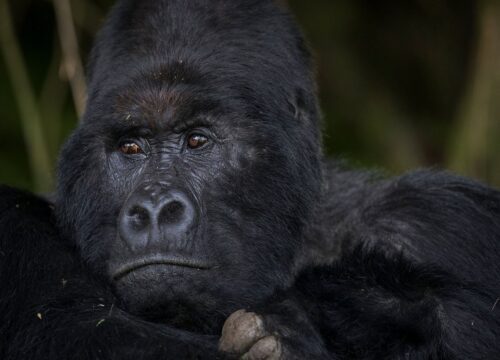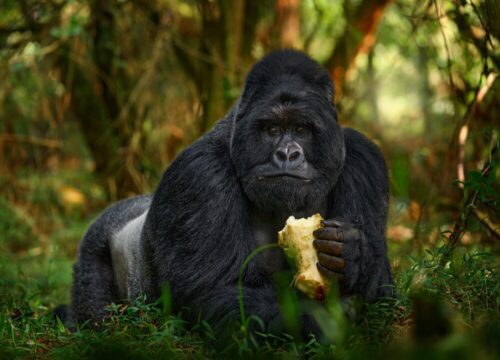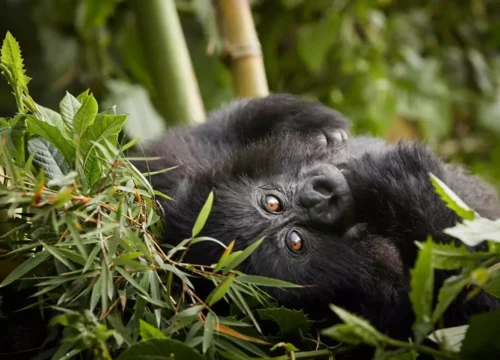Lake Manyara National Park Safari Guide | Wildlife & Tips
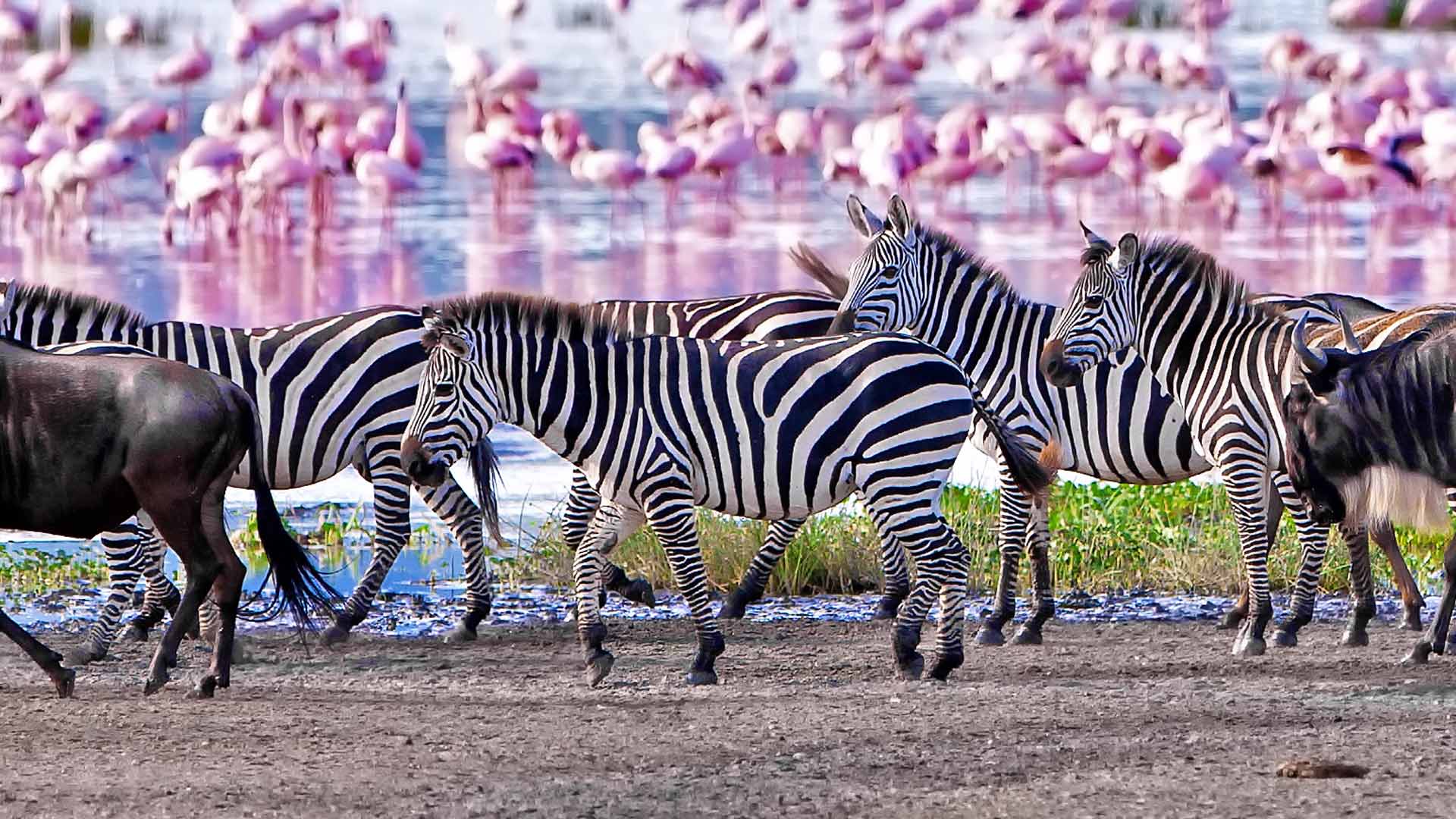
Nestled at the base of the Great Rift Valley escarpment in northern Tanzania, Lake Manyara National Park is one of the country’s most scenic and ecologically diverse safari destinations. Though smaller than other parks in the region, Lake Manyara offers a uniquely compact safari experience that blends lush groundwater forests, open grassy floodplains, acacia woodlands, and a shallow alkaline lake teeming with birdlife — all within a single day’s drive.
Covering approximately 330 square kilometers, with nearly two-thirds of its area occupied by the lake itself, Lake Manyara National Park serves as a lush oasis for wildlife migrating between Tarangire and the Ngorongoro Highlands. Its unique location and landscape diversity make it one of the best places in Tanzania for birdwatching, primate tracking, and seeing large herbivores up close in a green, semi-tropical setting.
One of the park’s most iconic claims to fame is its population of tree-climbing lions — a rare behavior observed in only a few places in Africa. While lion sightings are never guaranteed, the chance to witness a predator lounging across the branches of an acacia tree draws wildlife enthusiasts and photographers from around the world.
Safari Types and Itineraries for Lake Manyara National Park
Lake Manyara National Park offers incredible flexibility for safari planning — whether you’re looking for a one-day adventure or a multi-park circuit across northern Tanzania. Thanks to its close proximity to Arusha and key attractions like Ngorongoro and Tarangire, it’s easy to integrate Lake Manyara into custom itineraries, short getaways, or full safari loops.
Below is an extended list of the most popular Lake Manyara safari itineraries, from quick visits to comprehensive wildlife circuits. All of these can be customized to match your travel style and budget. Click the link after each option to Request a Quote directly from Nextgen Safaris.
1-Day Lake Manyara Safari from Arusha
Perfect for travelers short on time but eager to see elephants, flamingos, baboons, and more in one day. Includes round-trip transfers, lunch, and a full-day game drive.
Request a Quote for 1-Day Lake Manyara Safari
2 Days Lake Manyara and Tarangire Safari
A compact but rewarding itinerary combining elephant-rich Tarangire with scenic Lake Manyara. Ideal for weekend safaris or add-ons before a Zanzibar beach escape.
Request a Quote for 2 Days Manyara & Tarangire Safari
3 Days Lake Manyara, Ngorongoro, and Tarangire Safari
Explore three distinct parks with diverse ecosystems and wildlife in just three days. Great for travelers wanting variety without rushing.
Request a Quote for 3-Day Lake Manyara Circuit
4 Days Lake Manyara, Ngorongoro Crater, and Serengeti Safari
This classic itinerary covers Lake Manyara’s forests, the Big Five in Ngorongoro, and the open plains of Serengeti. Best for those who want depth without overextending.
Request a Quote for 4-Day Tanzania Highlights Safari
5 Days Lake Manyara, Serengeti & Ngorongoro Safari
Spend one day in Lake Manyara before heading deeper into Serengeti and ending with a crater descent in Ngorongoro. Ideal for Big Five seekers and wildlife lovers.
Request a Quote for 5-Day Northern Circuit Safari
6 Days Lake Manyara, Tarangire, Serengeti & Ngorongoro
This well-balanced itinerary includes all major parks of the northern circuit. Enjoy elephants, lions, flamingos, and migration herds.
Request a Quote for 6-Day All Parks Safari
7 Days Lake Manyara, Tarangire, Serengeti, Ngorongoro & Maasai Village Visit
A full week of wildlife and culture. Visit local communities near Lake Manyara, see tree-climbing lions, then track big cats and herds across the plains.
Request a Quote for 7-Day Wildlife and Culture Safari
8 Days Lake Manyara + Great Migration Safari (Seasonal)
Combine Lake Manyara with a strategic migration-based route through Serengeti. Tailored for travelers visiting in July–October or January–March.
Request a Quote for 8-Day Great Migration & Lake Manyara Safari
10 Days Lake Manyara, Lake Eyasi, Ngorongoro, Serengeti & Tarangire
Explore everything: walking with Hadzabe tribes at Lake Eyasi, crater descents, game drives in all major parks, and a relaxing Lake Manyara finale.
Request a Quote for 10-Day Grand Tanzania Safari
Add-On Options for Lake Manyara National Park Safaris:
- Canoe Safari (seasonal) – Paddle along the lake’s edge, spotting hippos, flamingos, and more
Request a Quote with Canoe Safari Add-On - Treetop Walkway Experience – Walk above the forest canopy on suspended bridges inside the park
Request a Quote with Treetop Walkway Add-On - Night Game Drive – Experience the park’s nocturnal side with a guided drive from select lodges
Request a Quote for Night Game Drive Experience
No matter how long you have or what your travel style is, Lake Manyara National Park can be the perfect beginning, midpoint, or conclusion to your Tanzanian safari. Contact Nextgen Safaris today and we’ll help you build a tailored itinerary that includes this lush, wildlife-rich gem.

But Lake Manyara is far more than a lion park. Visitors often encounter large troops of baboons in the forested entrance, herds of elephants walking through the fig tree groves, and flocks of flamingos painting the lake’s edge in shades of pink. Buffaloes, giraffes, zebras, hippos, warthogs, impalas, and monitor lizards also roam the park, offering a complete and well-rounded wildlife experience in a relatively small space.
Thanks to its proximity to Arusha (around 2 hours by road) and its position along the popular northern safari circuit, Lake Manyara National Park is often included as a short stopover on the way to the Serengeti or Ngorongoro Crater. However, this park is not to be underestimated — its vibrant ecosystems, photogenic landscapes, and low visitor density make it an excellent destination in its own right.
Whether you’re on a tight schedule or looking to begin your Tanzanian safari with a soft, green introduction to the wild, Lake Manyara National Park offers beauty, biodiversity, and serenity all in one unforgettable experience.
Where is Lake Manyara National Park Located?
Lake Manyara National Park is located in northern Tanzania, about 126 kilometers (78 miles) southwest of Arusha — the gateway city for safaris in the Northern Circuit. The park sits between the Ngorongoro Highlands to the west and Tarangire National Park to the southeast, making it a natural stop on the way to more distant destinations like Serengeti National Park or the Ngorongoro Crater.
The park stretches along the western edge of Lake Manyara, a shallow, alkaline lake that fills part of the Great Rift Valley floor. The dramatic Rift Valley escarpment rises sharply behind the park, creating a stunning scenic backdrop and contributing to the diverse ecological zones within this relatively compact area.
Getting to Lake Manyara National Park
By Road:
From Arusha, it takes approximately 1.5 to 2 hours to reach the main gate of Lake Manyara National Park by car or 4×4 safari vehicle. The route is well-paved and passes through towns like Mto wa Mbu, a vibrant cultural village known for its banana plantations, local crafts, and street food. Many safari itineraries include a stop here before or after exploring the park.
By Air:
Fly-in safaris are available via the Lake Manyara Airstrip, which receives scheduled flights from:
- Arusha
- Zanzibar
- Dar es Salaam
- Serengeti (Seronera)
The airstrip is located just outside the park, and most lodges offer pickup and drop-off services.
Because of its convenient location, Lake Manyara National Park is often included in 1-day, 2-day, or multi-park safari itineraries, especially those that also visit Tarangire, Ngorongoro, or Lake Eyasi. Its easy access makes it ideal for travelers who want to jump straight into game viewing after landing in Arusha or Kilimanjaro International Airport.
Interactive Map of Lake Manyara National Park
Use the map below to explore the layout of Lake Manyara National Park, including the park entrance, key wildlife zones, lake boundaries, and nearby lodges.
Why Visit Lake Manyara National Park?
Lake Manyara National Park may be smaller than its more famous northern Tanzania neighbors, but it offers one of the most diverse and immersive safari experiences in the country. From its dramatic Rift Valley cliffs to its bird-filled alkaline lake and groundwater forests alive with primates, Lake Manyara condenses nearly every Tanzanian landscape into one compact, beautiful park.
If you’re wondering whether Lake Manyara is worth including in your itinerary — the answer is a resounding yes. Here’s why:
Tree-Climbing Lions
Lake Manyara is one of the few places in Africa where you might see lions resting in the branches of trees, a behavior rarely observed elsewhere. While sightings aren’t guaranteed, these elusive predators are known to climb acacia trees in the park’s southern woodlands, often lounging lazily in the mid-morning sun. For many travelers, the chance to spot a tree-climbing lion is reason enough to visit.
Incredible Birdlife
With over 550 bird species recorded, Lake Manyara National Park is a birdwatcher’s paradise. The park’s lake and seasonal floodplains attract flocks of flamingos, pelicans, storks, herons, and spoonbills. Along the forested edges, you’ll find hornbills, crowned eagles, bee-eaters, and colorful turacos. Whether you’re a professional birder or a casual enthusiast, the diversity here is unmatched for such a small area.
Close-Up Elephant Encounters
Lake Manyara’s groundwater forests are prime territory for elephants, who thrive in the shaded, fertile landscape. Unlike the vast open plains of Serengeti or Tarangire’s drier zones, the elephants in Lake Manyara often appear from the thick foliage, offering surprisingly close and intimate sightings — sometimes just steps from the road.
A Compact Park with Big Diversity
In the span of a few hours, you can pass through dense jungle-like forests, open grassy floodplains, wooded savannahs, and finally reach the alkaline lake shimmering in the distance. This ecological diversity means you’ll likely see baboons, blue monkeys, giraffes, zebras, hippos, buffalo, and dozens of bird species on a single game drive.
For photographers, Lake Manyara’s landscapes are dynamic and ever-changing, with the towering cliffs of the Rift Valley providing a majestic backdrop.
Unique Safari Activities
In addition to traditional game drives, Lake Manyara National Park offers some of the most unique safari activities in Tanzania, including:
- Canoe safaris (seasonal, depending on water levels)
- Treetop canopy walks on elevated platforms above the forest
- Night game drives (permitted through select lodges)
- Cultural tours in Mto wa Mbu, a town just outside the park with over 120 tribes represented
These options provide a richer, more interactive experience for travelers who want to go beyond the typical game drive.
Ideal for Short or Introductory Safaris
Because it’s so close to Arusha, Lake Manyara National Park is the perfect destination for first-time safari-goers or travelers on a tight schedule. You can see a wide variety of wildlife and habitats in just one or two days without long transfers. It’s also an excellent starting point for longer safaris that include Tarangire, Ngorongoro, and Serengeti.
Whether you’re chasing flamingos, looking for tree-climbing lions, or simply want to experience one of Tanzania’s most scenic and serene parks, Lake Manyara National Park promises a rewarding visit that often surprises even the most seasoned safari-goers.
Wildlife in Lake Manyara National Park
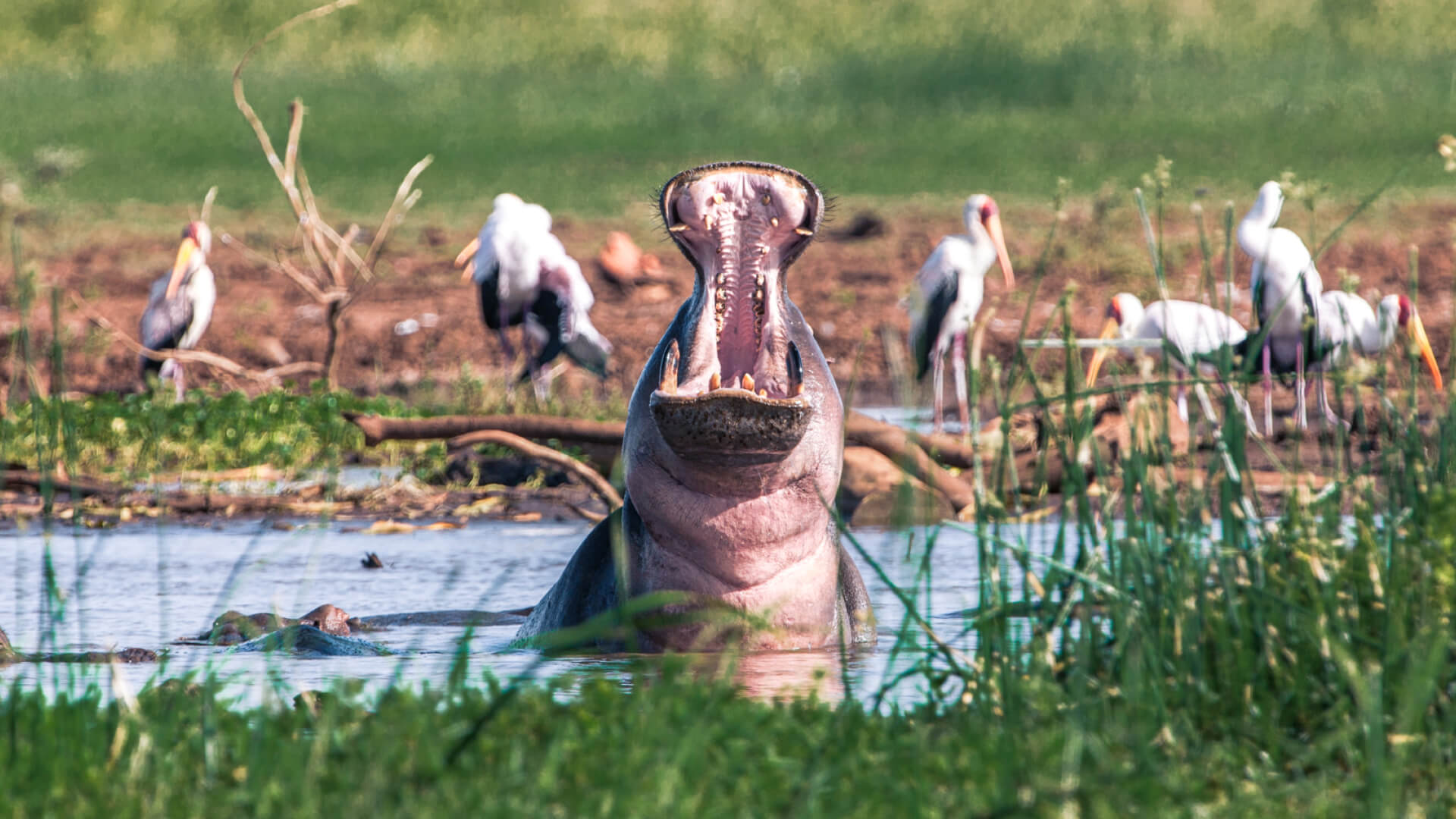
Despite its modest size, Lake Manyara National Park offers one of the richest wildlife experiences in East Africa. Its varied ecosystems — ranging from groundwater forests and floodplains to acacia woodlands and the alkaline lake itself — support a wide range of animal and bird species, making it a perfect destination for travelers who want to see more than just the Big Five.
The park is particularly famous for its tree-climbing lions, a rare behavior observed in only a handful of places across the African continent. These lions often retreat into the branches of umbrella acacia trees, especially during the hot midday hours, giving visitors a chance to spot them in a uniquely photogenic position. While sightings are never guaranteed, they remain one of the most exciting draws for travelers to Lake Manyara National Park.
Mammals of Lake Manyara
One of the first things you’ll notice after entering the park is the abundance of baboons. Large troops — sometimes numbering in the hundreds — dominate the shaded roadways of the park’s northern forests. They’re followed closely by blue monkeys, vervet monkeys, and bush babies in the trees, making Lake Manyara a primate hotspot.
Elephants are another major highlight. These gentle giants roam the forest in small to medium-sized herds and are often seen up close — feeding quietly, crossing the road, or bathing in muddy clearings. The close encounters with elephants in this park are often more intimate than in open savannah environments like Serengeti or Tarangire.
Other mammals include:
- Buffaloes
- Giraffes
- Zebras
- Wildebeests
- Warthogs
- Hippos (especially in the hippo pool along the lake edge)
- Kirk’s dik-dik and other small antelope species
- Bushbucks, waterbucks, and impalas
Predators such as lions and leopards are present, though more elusive in the dense forest and woodland habitats. Night game drives from select lodges may also reveal civets, genets, and porcupines.
Birds of Lake Manyara
With over 550 recorded bird species, Lake Manyara National Park is one of the top birding destinations in East Africa. Its location along the Rift Valley and diverse habitats provide a haven for both migratory and resident species. The alkaline lake is a seasonal home to thousands of lesser flamingos and greater flamingos, creating a pink ribbon across the water’s edge.
Key bird species include:
- Pelicans, yellow-billed storks, cormorants, and herons
- Grey crowned cranes, spoonbills, and marabou storks
- Hornbills, bee-eaters, and rollers in the forested zones
- Raptors such as martial eagles, fish eagles, and augur buzzards
Whether you’re an experienced birder or simply captivated by colorful wings and unique calls, the birdlife in Lake Manyara is astounding in both variety and visibility.
Seasonal Wildlife Patterns
Wildlife in Lake Manyara National Park is excellent year-round, but the experience changes with the seasons. During the dry season (June–October), animals tend to gather closer to permanent water sources like the hippo pools and the forest streams. The open areas near the lake offer great visibility for game viewing.
In the wet season (November–May), the park turns lush and green, attracting even more birdlife and smaller mammals. The thick vegetation can make spotting big game slightly more difficult, but the setting becomes even more picturesque.
Whether you’re driving past a troop of 100 baboons, spotting elephants under fig trees, or witnessing flamingos shimmer along the lake edge, the wildlife of Lake Manyara National Park is a constant surprise diverse, abundant, and full of character.
Best Time to Visit Lake Manyara National Park
Lake Manyara National Park is a year-round safari destination, with something unique to offer in every season. However, the experience can vary significantly depending on weather, wildlife movement, and travel preferences. Understanding the best time to visit Lake Manyara will help you tailor your safari for the most rewarding experience — whether you prioritize photography, birdwatching, dry-season game drives, or fewer crowds.
Dry Season (June to October): Prime Wildlife Viewing
The dry season is widely regarded as the best time for wildlife viewing in Lake Manyara National Park. From June through October, the lake begins to shrink, and animals congregate around remaining water sources like the hippo pools and underground forest streams. This period offers:
- Better visibility due to thinning vegetation
- Easier game drives on dry roads
- Excellent elephant and buffalo sightings
- Lower risk of mosquitoes
The weather is sunny and pleasant, with cooler mornings and warm afternoons. If your goal is to spot large mammals in open terrain and enjoy classic safari conditions, this is the ideal time to visit.
Wet Season (November to May): Lush Landscapes and Birds
The wet season, also known as the green season, runs from November to May, with peak rains typically occurring in March and April. While the rains can limit access to some areas, this period transforms Lake Manyara National Park into a lush, green paradise. It’s the best time for:
- Birdwatching, with migratory species arriving
- Flamingo sightings along the lake’s edge
- Photography, thanks to vibrant landscapes and dramatic skies
- Lower prices and fewer tourists
This season also marks the calving period for many herbivores, attracting predators and providing excellent opportunities for viewing animal behavior.
Month-by-Month Overview in a Mobile-Friendly Table
| Season | Months | Highlights |
|---|---|---|
| Dry Season | June – October | Best wildlife visibility, fewer mosquitoes, ideal for game drives and elephants. |
| Short Rains | November – December | Lush scenery begins, birds arrive, fewer tourists, lower rates. |
| Green Season | January – February | Great for birdwatching, flamingos, newborn wildlife, and photo safaris. |
| Long Rains | March – May | Quietest period, low prices, best for greenery and birds, but access may be limited. |
No matter when you choose to go, Lake Manyara National Park offers an immersive experience that balances wildlife, landscapes, and unique sightings — all within a manageable distance from Arusha.
Best Lodges and Camps in Lake Manyara National Park
Where you stay during your safari in Lake Manyara National Park plays a big role in the kind of experience you’ll have. Whether you want five-star luxury with Rift Valley views, a comfortable midrange camp near the park gate, or a budget-friendly base for a short stopover, Lake Manyara offers accommodation options for every traveler.
Below is a curated list of the best lodges and camps in Lake Manyara National Park, grouped by category and selected for their location, comfort, service, and value.
Luxury Lodges and High-End Tented Camps
For those seeking the finest service, exclusivity, and unforgettable views, these luxury lodges near Lake Manyara National Park offer world-class experiences, often including extras like bush dining, infinity pools, and private guides.
1. &Beyond Lake Manyara Tree Lodge
Located inside the park’s remote southern end, this is the only luxury lodge within the park boundaries. Expect elegant treehouse suites, gourmet dining, night game drives, and walking safaris — perfect for a secluded, high-end experience.
2. Escarpment Luxury Lodge
Perched on the edge of the Great Rift Valley, this lodge features private chalets with panoramic views of Lake Manyara. The setting is tranquil, the architecture blends into the landscape, and the infinity pool overlooks the lake basin.
3. Lake Manyara Kilimamoja Lodge
Positioned near the park gate, Kilimamoja is a stunning hilltop property offering luxury rooms with private balconies, a large pool, and top-tier hospitality. It’s ideal for travelers combining Lake Manyara with Ngorongoro or Tarangire.
Midrange Lodges and Camps
These properties offer comfort and authenticity at a more affordable price point. They’re perfect for families, couples, or small groups looking for value without sacrificing the safari feel.
1. Manyara Wildlife Safari Camp
This midrange favorite features canvas-and-stone chalets with lake views, a swimming pool, and a cozy central restaurant. Located close to the park, it’s a great balance between affordability and comfort.
2. Nsya Lodge
Situated near Mto wa Mbu, Nsya Lodge offers bungalows, tents, and safari cottages in a peaceful garden setting. It’s great for travelers interested in cultural activities as well as wildlife.
3. Migombani Camp
This hilltop camp is popular for its scenic setting and eco-conscious design. It offers safari tents with stunning views of the lake, clean shared facilities, and a beautiful infinity pool — all at midrange prices.
Budget Camps and Affordable Lodges
If you’re traveling on a tight budget but still want a great location near Lake Manyara National Park, the following options provide simple, clean accommodations with access to all major activities.
1. Fanaka Safaris Campsite and Lodge
Located in Mto wa Mbu, Fanaka offers basic rooms, permanent tents, and camping facilities. It’s a good choice for overlanders, backpackers, or group tours.
2. Jambo Campsite and Bungalows
Also in Mto wa Mbu, Jambo has both camping space and affordable bungalows. It’s known for friendly service and proximity to cultural sites and local food markets.
3. Haven Nature Safari Camp
This eco-budget option offers tented rooms just outside the park entrance. Ideal for those wanting rustic charm, solar power, and proximity to community-based tourism.
Choosing Where to Stay in Lake Manyara
When deciding where to stay in Lake Manyara National Park, consider the following:
- Proximity to the park: Inside-park lodges offer early access and exclusivity, but come at a premium.
- Safari style: Luxury lodges offer privacy and added activities; budget options provide a great base for shorter stays.
- Add-ons and views: Some camps include night drives, cultural tours, and unbeatable lake or escarpment views.
At Nextgen Safaris, we work with all major accommodations in the Lake Manyara region and can help you find the perfect lodge or camp based on your itinerary, travel season, and budget.
How to Get to Lake Manyara National Park
One of the best things about Lake Manyara National Park is how easy it is to reach — especially for travelers starting their safari in Arusha or arriving at Kilimanjaro International Airport (JRO). Whether you’re driving or flying, this park’s accessibility makes it the perfect first or last stop on Tanzania’s Northern Safari Circuit.
Getting to Lake Manyara by Road
Most travelers visit Lake Manyara National Park as part of a road-based safari itinerary. From Arusha, the journey takes around 1.5 to 2 hours via a fully paved road along the main highway toward Karatu and Ngorongoro.
The drive is scenic and culturally rich, passing through the vibrant town of Mto wa Mbu, known for its colorful markets, banana plantations, and cultural diversity. Many safari companies — including Nextgen Safaris — include a stop in Mto wa Mbu for a walking tour or traditional lunch before entering the park.
- Distance from Arusha to Lake Manyara Gate: Approx. 126 km
- Distance from Kilimanjaro Airport to Lake Manyara: Approx. 190 km (3.5 hours)
Road conditions are excellent, and the route is safe and frequently used by tour operators and safari vehicles.
Getting to Lake Manyara by Air
If you’re short on time or prefer a more luxurious travel experience, you can reach Lake Manyara National Park by air. The park is served by the Lake Manyara Airstrip, located just outside the park gate. Daily flights are available from several key safari hubs, including:
- Arusha Airport (ARK) – Approx. 30-minute flight
- Serengeti (Seronera or other strips) – 1 to 1.5 hours
- Zanzibar or Dar es Salaam – 1.5 to 2 hours
Flights are operated by trusted regional carriers such as Coastal Aviation, Auric Air, and Regional Air.
Once you land, your guide or lodge will be waiting to transfer you into the park, often starting with a short game drive as you make your way to your accommodation.
Common Travel Combinations
Lake Manyara National Park is frequently paired with:
- Tarangire National Park – 1.5-hour drive south
- Ngorongoro Crater – 1 hour drive west
- Serengeti National Park – 6–7 hours by road or 1 hour by air
These combinations form the basis of Tanzania’s Northern Circuit Safari, which is popular among first-time visitors, photographers, and wildlife lovers.
Park Entrance and Permits
Visitors must enter Lake Manyara National Park through the main gate near Mto wa Mbu, where TANAPA staff process entry permits. Park fees are typically included in your safari package, and payments must be made digitally (cash is not accepted at the gate).
Whether you’re driving in for a day trip or flying into the Manyara airstrip for a luxurious overnight stay, getting to Lake Manyara National Park is smooth, safe, and well-connected to all major destinations in northern Tanzania.
Entrance Fees and Costs for Lake Manyara National Park
Understanding the entrance fees and associated costs of visiting Lake Manyara National Park is essential for budgeting your safari properly. Whether you’re booking a full package or organizing a self-drive trip, all visitors must pay daily entry and activity fees regulated by TANAPA — the Tanzania National Parks Authority.
Most tour operators (like Nextgen Safaris) include these fees in your total safari package, but if you’re arranging a private or independent trip, here’s what you need to know.
Lake Manyara National Park Entry Fees (Per Person Per Day)
All fees include 18% VAT and are valid for 24 hours. Rates below apply to foreign non-residents (FNR), East African citizens, and residents.
| Visitor Type | Entry Fee (USD) | With VAT |
|---|---|---|
| Foreign Adults (16+) | $59 | $69.62 |
| Foreign Children (5–15 yrs) | $17.70 | $20.89 |
| Children Under 5 | Free | |
Additional Costs to Consider
If you’re staying at a lodge inside Lake Manyara National Park, a concession fee may apply. There are also charges for special activities or private transport:
- Concession Fee: $59 per adult per night (if staying inside the park)
- Vehicle Entry Fee: Covered by safari operators; self-drivers pay based on vehicle type
- Night Game Drive Permit: $59–$75 per person (available through select lodges only)
- Canoe Safari (seasonal): Approx. $50–$70 per person
- Treetop Walkway (optional): Approx. $35–$40 per person
These prices may vary slightly depending on the operator, park updates, or season.
What’s Included in Most Safari Packages?
If you book with Nextgen Safaris, your Lake Manyara National Park safari package typically includes:
- Park entry and concession fees
- Game drives in a 4×4 safari vehicle
- Accommodation and full board (meals)
- Professional English-speaking guide
- Bottled water during safaris
- Transfers from and to Arusha or nearby locations
Optional experiences like cultural tours, canopy walks, or balloon rides (available in nearby parks) can be added upon request.
Payment Tips for Independent Visitors
If you’re self-driving, park entry fees must be paid at the gate using:
- Visa or MasterCard
- Pre-paid TANAPA e-cards (for residents or tour operators)
Cash is not accepted at the gate.
Always bring your passport or ID, and arrive at the gate at least 30–45 minutes before your intended entry, especially during high season.
With transparent pricing and well-regulated entry systems, Lake Manyara National Park offers excellent value whether you’re visiting on a budget or indulging in a luxury safari. Your entry fee contributes to conservation efforts and community development, helping protect this precious landscape for future generations.
Lake Manyara vs Tarangire – Which Park Should You Choose?
One of the most common questions for travelers planning a safari in northern Tanzania is:
Should I visit Lake Manyara or Tarangire National Park?
Both parks are located within a short drive of Arusha, and each offers unique landscapes, wildlife, and experiences. But depending on your travel goals, one may suit you better than the other — or even better, you can combine both into a short, richly rewarding circuit.
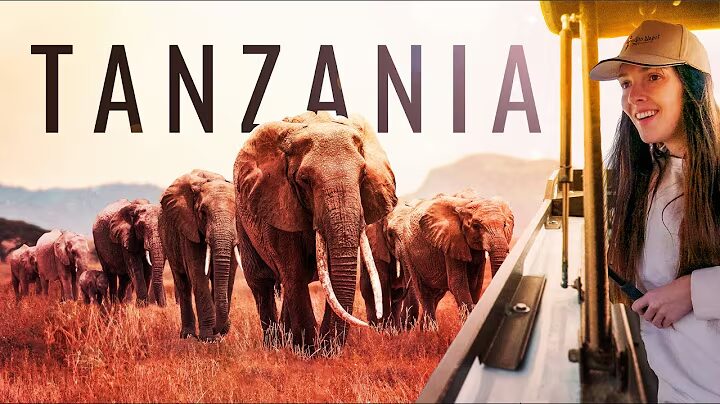
In this extended guide, we’ll help you compare Lake Manyara vs Tarangire in terms of wildlife, scenery, safari experience, seasonality, activities, and value — so you can choose with confidence (or decide to do both).
Wildlife Comparison: Elephants, Lions, and Birdlife
Lake Manyara National Park is known for its lush forests and lake ecosystem, making it a haven for primates, hippos, and over 550 species of birds. Flamingos, storks, pelicans, and hornbills fill the skies and shores. Lake Manyara is also one of the few places in Africa where you may see tree-climbing lions, adding to its uniqueness.
Tarangire National Park, in contrast, is famous for its massive elephant herds — sometimes over 300 strong — especially during the dry season. Tarangire also hosts lions, leopards, cheetahs, and large numbers of buffaloes, zebras, and wildebeests. Birdwatchers will be thrilled with both parks, but Tarangire’s open savannahs allow easier viewing of raptors, ostriches, and bustards.
Verdict:
- Choose Lake Manyara for birds, primates, and forest scenery.
- Choose Tarangire for elephants, predators, and classic savannah wildlife.
Landscape and Scenery
Lake Manyara is a photographer’s dream — offering an eclectic mix of underground forests, hot springs, alpine-like woodlands, and the dramatic backdrop of the Great Rift Valley Escarpment. The park also features floodplains and a gleaming alkaline lake that glows pink with flamingos during the wet season.
Tarangire, on the other hand, showcases iconic baobab trees, rolling grasslands, seasonal swamps, and wide views across acacia-dotted plains. It feels more like traditional East African safari terrain.
Verdict:
- Choose Lake Manyara for lush, intimate, and varied terrain.
- Choose Tarangire for wide, open vistas and iconic baobabs.
Safari Experience: Crowds and Atmosphere
Because of its compact size and easy access, Lake Manyara National Park can get busier during peak season (especially near the entrance and hippo pool), making early morning drives more favorable. Still, the park retains a peaceful, green ambience and is perfect for short game drives or half-day visits.
Tarangire National Park is larger and more spread out. Even during high season, you can drive for hours without encountering another vehicle. It offers a more remote and wild feel, ideal for those who prefer longer safaris with fewer interruptions.
Verdict:
- Choose Lake Manyara for shorter safaris and scenic variety.
- Choose Tarangire for multi-hour game drives in solitude.
Unique Activities and Add-Ons
Lake Manyara stands out for its non-traditional safari options, such as:
- Treetop canopy walks
- Canoe safaris (when water levels allow)
- Night game drives
- Cultural experiences in Mto wa Mbu
Tarangire offers some walking safaris and night drives, but the focus is primarily on classic vehicle-based game viewing.
Verdict:
- Choose Lake Manyara if you want to combine wildlife with activities beyond the vehicle.
- Choose Tarangire if you want immersive game drives and elephant encounters.
Best Time to Visit Each Park
Both parks are year-round destinations, but the dry season from June to October is best for both. In Lake Manyara, wildlife can be harder to spot in the thick wet-season foliage but birding is at its best. In Tarangire, the dry season brings dramatic wildlife concentrations to the Tarangire River.
Verdict:
- Tarangire is more rewarding in the dry season for big game.
- Lake Manyara is great during the green season for birds, lush scenery, and fewer crowds.
Cost and Value Comparison
Lake Manyara National Park has lower entry fees and shorter safari durations, making it more budget-friendly for day trips or quick add-ons. It’s also closer to Arusha.
Tarangire has slightly higher costs, but for extended game viewing and more wildlife variety, the value per day is excellent.
Verdict:
- Choose Lake Manyara if you’re on a tight schedule or budget.
- Choose Tarangire for deeper wildlife immersion over multiple days.
Summary Table: Lake Manyara vs Tarangire
| Category | Lake Manyara National Park | Tarangire National Park |
|---|---|---|
| Key Wildlife | Flamingos, baboons, tree-climbing lions | Elephants, lions, buffaloes, cheetahs |
| Scenery | Lush forests, lake, escarpment backdrop | Savannah, baobabs, river valleys |
| Size | 330 sq km | 2,850+ sq km |
| Activities | Game drives, canopy walk, canoeing | Game drives, walking safaris, night drives |
| Best For | Short trips, birders, scenery lovers | Wildlife-focused travelers, elephant lovers |
Final Verdict
If you’re planning a short safari or prefer diverse landscapes, birds, and unique activities, Lake Manyara National Park is a perfect choice. If your goal is to see large mammals in open terrain with fewer crowds, especially in the dry season, then Tarangire National Park is unbeatable.
For the ultimate experience, consider combining both — starting with Lake Manyara’s forests and flamingos, and finishing with Tarangire’s elephants and wide savannahs.
Request a Custom Safari That Includes Lake Manyara and Tarangire
Responsible Tourism and Conservation in Lake Manyara National Park
Lake Manyara National Park isn’t just a place of natural beauty and wildlife — it’s also a conservation success story. As part of the Tanzania National Parks system (TANAPA), the park plays a vital role in protecting biodiversity, maintaining delicate ecosystems, and supporting surrounding communities. And as a visitor, you become part of this impact.
When you travel responsibly, your presence helps preserve the land, support local livelihoods, and ensure that future generations can enjoy the wild wonders of Lake Manyara.
Conservation in Action: Protecting Wildlife and Ecosystems
Lake Manyara’s unique geography — from its alkaline lake and groundwater forests to its escarpment cliffs — supports an extraordinary range of plant and animal life. However, this diversity also makes the park vulnerable to environmental pressures, including deforestation, poaching, overgrazing outside park boundaries, and climate change.
Thanks to coordinated efforts by TANAPA and local stakeholders, Lake Manyara National Park has benefited from:
- Anti-poaching patrols that protect elephants, lions, and lesser-known species like bushbucks and civets
- Habitat restoration programs, especially around the lake’s receding shoreline and hippo pools
- Wildlife corridors, enabling animals to migrate safely between Tarangire, Manyara Ranch, and Ngorongoro Highlands
- Research collaborations focused on bird migration, primate behavior, and flamingo breeding patterns
By paying your park entrance fee, you directly support these efforts — funding rangers, field operations, education programs, and park maintenance.
Responsible Travel: What You Can Do as a Visitor
Your behavior as a traveler matters. Small choices can make a significant difference in protecting Lake Manyara National Park’s environment and supporting the people who live nearby. Here’s how you can be a responsible tourist:
- Follow park guidelines: Stay on marked roads during game drives, don’t feed animals, and maintain a respectful distance.
- Avoid single-use plastics: Bring a reusable water bottle and eco-friendly toiletries.
- Travel during off-peak seasons: Visiting in the green season (November to May) helps spread tourism income and reduces strain on popular areas.
- Respect local culture: If you visit Mto wa Mbu or other nearby villages, ask permission before taking photos and engage respectfully with local customs.
- Stay in eco-conscious lodges: Many camps near Lake Manyara use solar power, employ local staff, recycle waste, and support conservation.
Nextgen Safaris works exclusively with accommodation providers and guides who prioritize low-impact tourism and community involvement. When you book with us, you’re investing in both the land and the lives connected to it.
Community Engagement and Cultural Tourism
Just outside the park lies Mto wa Mbu, a multicultural town home to over 120 tribes from across Tanzania. This village plays a key role in sustainable tourism around Lake Manyara National Park, offering opportunities for cultural exchange and income generation.
Through your visit, you can support:
- Local craft cooperatives – banana leaf paintings, wood carvings, and beadwork
- Farm-to-table experiences – traditional cooking tours with Tanzanian families
- Village walks and bike rides – led by community members trained in guiding and conservation awareness
Responsible tourism ensures that conservation goes beyond park borders — creating shared value for wildlife, visitors, and people alike.
Our Commitment to Conservation at Nextgen Safaris
At Nextgen Safaris, sustainability isn’t an add-on — it’s at the core of how we operate. We believe that unforgettable safaris should leave a lasting impact in all the right ways:
- We partner with lodges that prioritize solar energy, local hiring, and low-impact development.
- We support community-based tourism initiatives in Mto wa Mbu and nearby Maasai villages.
- We educate our guests on wildlife ethics and encourage travel choices that benefit both conservation and culture.
By choosing to explore Lake Manyara National Park with us, you help support Tanzania’s wildlife, empower its communities, and preserve its landscapes.
Practical Travel Tips for Lake Manyara National Park

Whether you’re planning a quick stop or a multi-day journey through northern Tanzania, being well-prepared for your time in Lake Manyara National Park will greatly improve your comfort, safety, and overall safari experience. From packing right to understanding local etiquette, here’s everything you need to know before you go.
What to Pack for Lake Manyara Safari
Packing smart for your Lake Manyara safari ensures you’re ready for the park’s varied landscapes — from humid forests to open plains and cool early mornings. Essentials include:
- Lightweight, neutral-colored clothing (avoid bright colors and black/blue, which attract insects)
- Long-sleeved shirts and pants for sun protection and mosquito defense
- A good hat, sunglasses, and sunscreen – especially important for boat or canoe trips
- Comfortable walking shoes or safari boots for nature walks and cultural tours
- A reusable water bottle – to stay hydrated and reduce plastic waste
- Binoculars – a must-have for birdwatching and distant wildlife
- Camera with zoom lens and extra batteries
- A light jacket or fleece for early morning and evening game drives
Optional but helpful:
- A scarf or dust mask for drier months
- Insect repellent with DEET
- A power bank or solar charger (some camps are off-grid)
Health & Safety Tips
Lake Manyara National Park is considered very safe for tourists, especially when traveling with a licensed operator like Nextgen Safaris. However, precautions are still essential:
- Malaria prevention: Carry anti-malarial medication, sleep under a mosquito net, and use repellent daily.
- Vaccinations: Yellow fever (required if arriving from endemic zones), plus hepatitis A, typhoid, and tetanus are often recommended. Always consult your travel clinic before departure.
- Stay inside the vehicle during game drives unless instructed otherwise by your guide.
- Listen to your guide during nature walks or canoe safaris — they are trained to keep you safe.
Travel insurance is strongly advised and should include medical evacuation coverage, as the park is remote and major hospitals are located in Arusha or Nairobi.
Photography Tips
Lake Manyara’s lush backdrops, dramatic Rift Valley cliffs, and flamingo-dotted shores offer excellent photographic opportunities — even for beginners.
- Golden hours (early morning and late afternoon) provide the best light.
- Use a zoom lens (200mm or more) to capture animals from a respectful distance.
- Don’t forget to photograph the scenery — tree roots, reflections, and baobab silhouettes make for striking shots.
- Bring lens cleaning cloths, as dust and humidity can be challenging.
Drone use is prohibited within the park without prior permission from TANAPA.
Safari Etiquette and Cultural Awareness
- Speak quietly and avoid sudden movements during wildlife encounters.
- Don’t feed or provoke animals.
- Ask permission before taking photos of locals during village tours or market visits.
- Be open-minded during cultural experiences — whether trying local food or learning a traditional greeting.
- Dress modestly when outside the park (especially in Mto wa Mbu).
Connectivity and Mobile Signal
Mobile network coverage inside Lake Manyara National Park is limited and varies by provider. Lodges may offer Wi-Fi, but expect slow or intermittent connections. This is a great opportunity to unplug and connect with nature.
Money and Tipping
While park fees are paid in advance through your tour company, you may want local currency for:
- Tipping guides, lodge staff, or cultural hosts (recommended: $10–$15/day for your guide)
- Souvenirs in Mto wa Mbu
- Drinks and optional extras at lodges
ATMs are available in Karatu and Mto wa Mbu, but bring cash in USD or Tanzanian Shillings for remote areas.
Quick Tips for a Smooth Lake Manyara Safari
- Book in advance during peak season (June–October)
- Bring printed copies of your passport and travel documents
- Start game drives early to maximize wildlife sightings
- Plan your safari with a reputable operator like Nextgen Safaris for a smooth, guided experience from start to finish
Frequently Asked Questions (FAQs) About Lake Manyara National Park

What is Lake Manyara National Park known for?
Lake Manyara National Park is famous for its stunning setting beneath the Great Rift Valley escarpment, its population of tree-climbing lions, large elephant herds, and rich birdlife, including seasonal flamingos. It’s also known for its diverse habitats — from groundwater forests to acacia woodlands and alkaline lakeshores — all within a compact safari area.
Can I see the Big Five in Lake Manyara?
No, Lake Manyara National Park does not host all of the Big Five. You can see elephants, lions, and buffaloes, and possibly leopards, but rhinoceroses are not present. For a complete Big Five experience, many travelers combine Lake Manyara with Ngorongoro Crater or Serengeti National Park.
How many days do you need in Lake Manyara?
A 1 to 2-day safari is ideal for Lake Manyara. The park is compact and accessible, making it perfect for short trips or as a stop on a longer northern circuit. One full day allows you to explore key habitats, while a second day gives time for special experiences like night drives, canopy walks, or a visit to Mto wa Mbu village.
Is Lake Manyara worth visiting?
Yes — Lake Manyara National Park is absolutely worth visiting, especially for first-time safari-goers, birdwatchers, photographers, or anyone seeking a peaceful, scenic alternative to the larger parks. Its proximity to Arusha, variety of ecosystems, and year-round accessibility make it a must-see on the Northern Tanzania Safari Circuit.
When is the best time to visit Lake Manyara?
The dry season (June to October) is best for wildlife visibility in Lake Manyara National Park, while the green season (November to May) is excellent for birding, flamingo sightings, and lush landscapes. Each season offers a different experience, making Lake Manyara a year-round destination.
How do I get to Lake Manyara?
Lake Manyara National Park is located about 2 hours by road from Arusha, along a paved highway through Mto wa Mbu. Alternatively, you can fly into Lake Manyara Airstrip from Arusha, Serengeti, or Zanzibar, with transfers arranged by your lodge or safari company.
Are night safaris allowed in Lake Manyara?
Yes, night game drives are permitted in Lake Manyara National Park, but only through certain lodges and with a special TANAPA permit. Night drives offer a chance to see nocturnal species like genets, bush babies, civets, and possibly leopards.
What kind of animals live in Lake Manyara?
Lake Manyara is home to elephants, hippos, giraffes, zebras, baboons, warthogs, buffaloes, and impalas, as well as predators like lions and leopards. The lake and floodplains support rich birdlife, especially flamingos, pelicans, spoonbills, and raptors.
Is it safe to visit Lake Manyara National Park?
Yes. Lake Manyara National Park is a safe and well-managed destination with minimal risks. All safaris are conducted by licensed guides and regulated by TANAPA. As with any wilderness area, following park rules, staying in the vehicle, and booking through a trusted operator like Nextgen Safaris ensures a safe and enjoyable experience.
Book Your Lake Manyara Safari with Nextgen Safaris
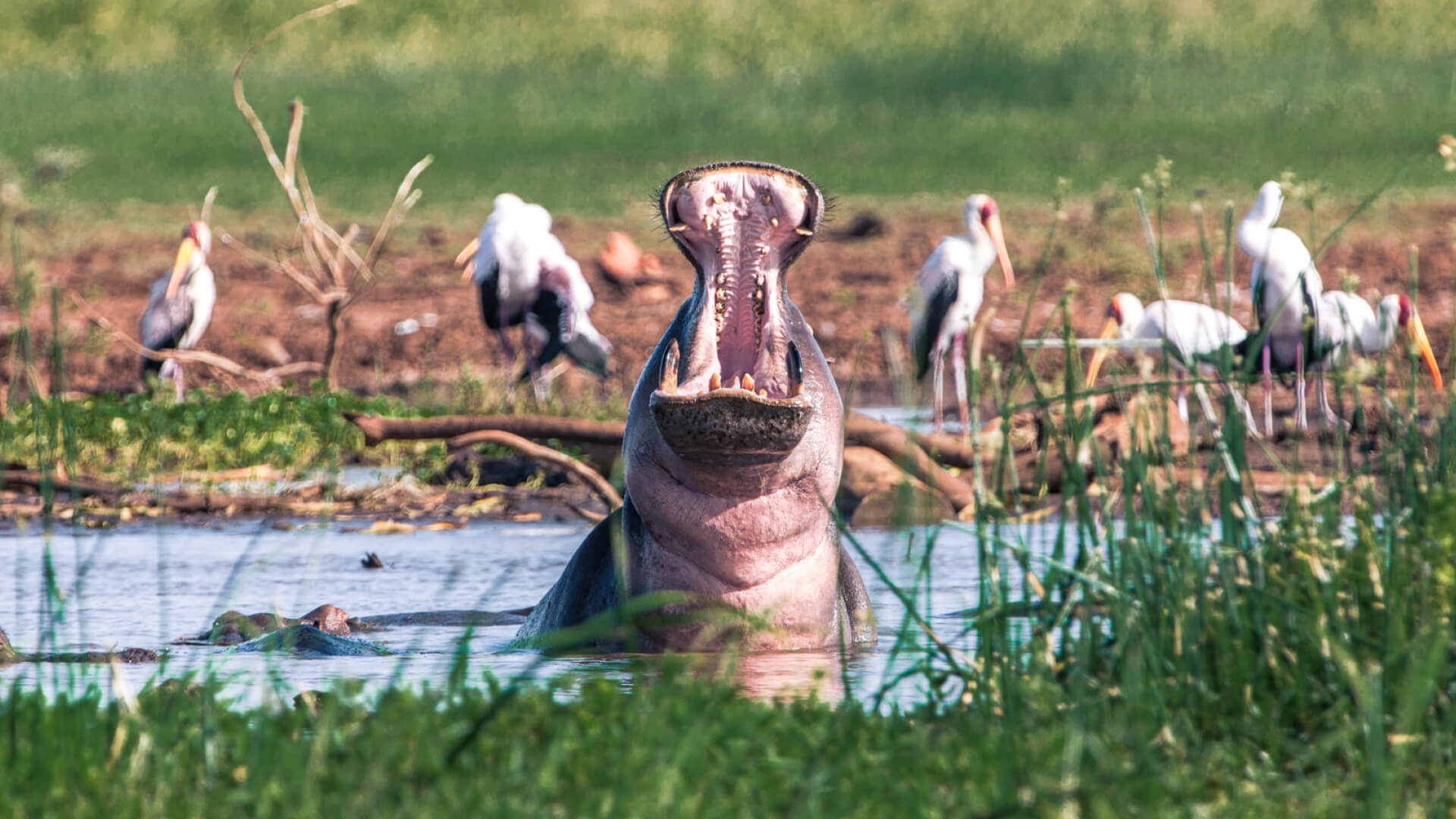
You’ve now seen why Lake Manyara National Park stands out as one of Tanzania’s most scenic and wildlife-rich safari destinations. From the tree-climbing lions and massive baboon troops to the shimmering lake filled with flamingos and the lush forests echoing with bird calls — Lake Manyara is the perfect blend of beauty, biodiversity, and accessibility.
Whether you’re planning a quick day trip from Arusha, a multi-park circuit across northern Tanzania, or a family safari with cultural experiences, Nextgen Safaris is here to help you design the perfect itinerary.
We’re a trusted East African tour company with local roots and international service standards. Our experienced guides, handpicked lodges, and personalized approach ensure that your Lake Manyara safari is safe, smooth, and unforgettable.
Why Travel Lake Manyara with Nextgen Safaris?
- Custom itineraries tailored to your schedule, interests, and budget
- Professional guides trained in wildlife interpretation and cultural hosting
- Reliable safari vehicles with window seats, charging ports, and roof hatches
- Top-rated lodges in and around Lake Manyara National Park
- 24/7 support from the time you book until you’re safely back home
- Ethical and responsible tourism — every safari supports conservation and local communities
Let’s Plan Your Journey
Whether you’re a solo traveler, a honeymoon couple, or a group exploring Africa for the first time, our team will design a Lake Manyara safari just for you.
Request your quote now and let your adventure begin:
Click here to plan your Lake Manyara Safari
Contact Us Anytime
Email: info@nextgensafaris.com
WhatsApp: +256 781 282 344
Website: www.nextgensafaris.com
Recent Posts
Last Minute Deals
Quick booking process
+49 1575 4711313





